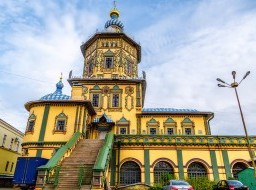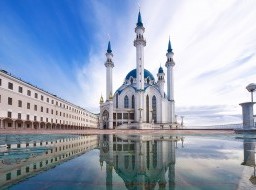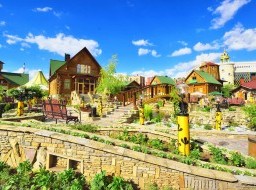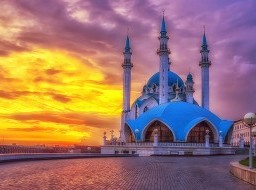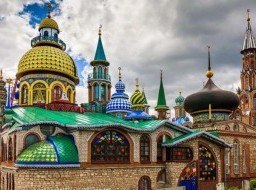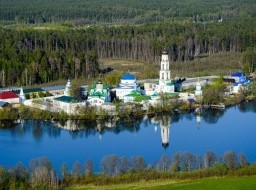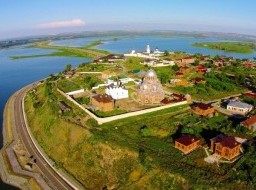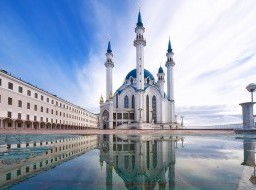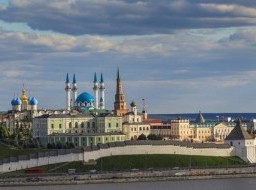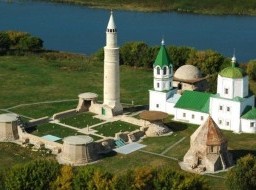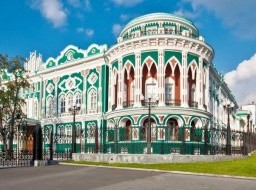Sviyazhskiy Holy Dormition Monastery
The Cathedral of the Dormition of the Most Holy Theotokos was built by the Pskovian craftsmen under the guidance of Postnik yakovlev and Ivan Schyryay in 1556 -1560. The refectory was attached to it in the 17th century. In the middle of the 18th century the cylindrical drum was replaced with an octahedron, whereas a helmet-shaped dome was replaced with a cupola styled in Ukrainian baroque. In the 19th century the refectory was added with a high porch. The series of murals of the 16th century, preserved till now, is one of the peculiar features of the cathedral. The frescoes were restored in the 90s of the 19th century by the painters N.M. Safonov and G.O. Chirikov under the supervision of Prof. D.V. Ainalov, the famous expert at the ancient art. From 1964 to 1984 the cathedral underwent the restoration works. The most famous frescoes are the portrayals of Tsar Ioann IV and Metropolitan Makary of Moscow depicted on the walls of the altar. The ancient iconostasis is preserved, but the icons are exhibited at the Museum of Fine Arts of the Republic of Tatarstan. At present the cathedral is undergoing the restoration works. Holy Dormition Monastery of Sviyazhsk is a monastery for men now on the island of Sviyazhsk, located at the confluence of the Volga and Sviyaga Rivers upstream from the city of Kazan, Tatarstan, Russia. The monastery was established in mid sixteenth century. It became a major institution associated with Christianity in the Diocese of Kazan. After being severely damaged during the Soviet time, restoration of the monastery and its dependency, the St. John the Forerunner Convent, has been in progress since 1997. HistoryDormition Monastery was founded by the Archimandrite German (Sadyrev-Polevoy) in 1555 at the fortress of Sviyazhsk. Sviyazhsk was the base from which Ivan IV staged his final and successful assault on the khanate of Kazan in 1551. Arch. German was canonized in 1595. The monastery prospered as the adjacent town of Sviyazhsk became the chief town of the province as reflected in the name of the Diocese of Kazan and Sviyazhsk. While the initial economic significance of the town declined in the following years the religious importance of the monastery grew during the following centuries. By the mid eighteenth century the monastery was the most wealthy and influential in the Kazan diocese.
During the Soviet years, construction of a dam down stream on the Volga River formed the Kuybyshev reservoir. The reservoir raised the level of the river, drowning much of the low lying area around Sviyazhsk village. The flooding resulted in the formation of Sviyazhsk island in 1955 upon which the village and monastery are located. Upon the return of the monastery to the Church, Hegumen Kyrill (Korovin) was assigned as the first Superior. As the island and monastery complex have great historical as well as religious significance, restoration work on the island has pursued both restoration of the monastery and of the “Sviyazhsk” museum-reserve of history and architecture. Since its founding the Dormition Monastery has been led by a number of distinguished superiors. These include:
|

